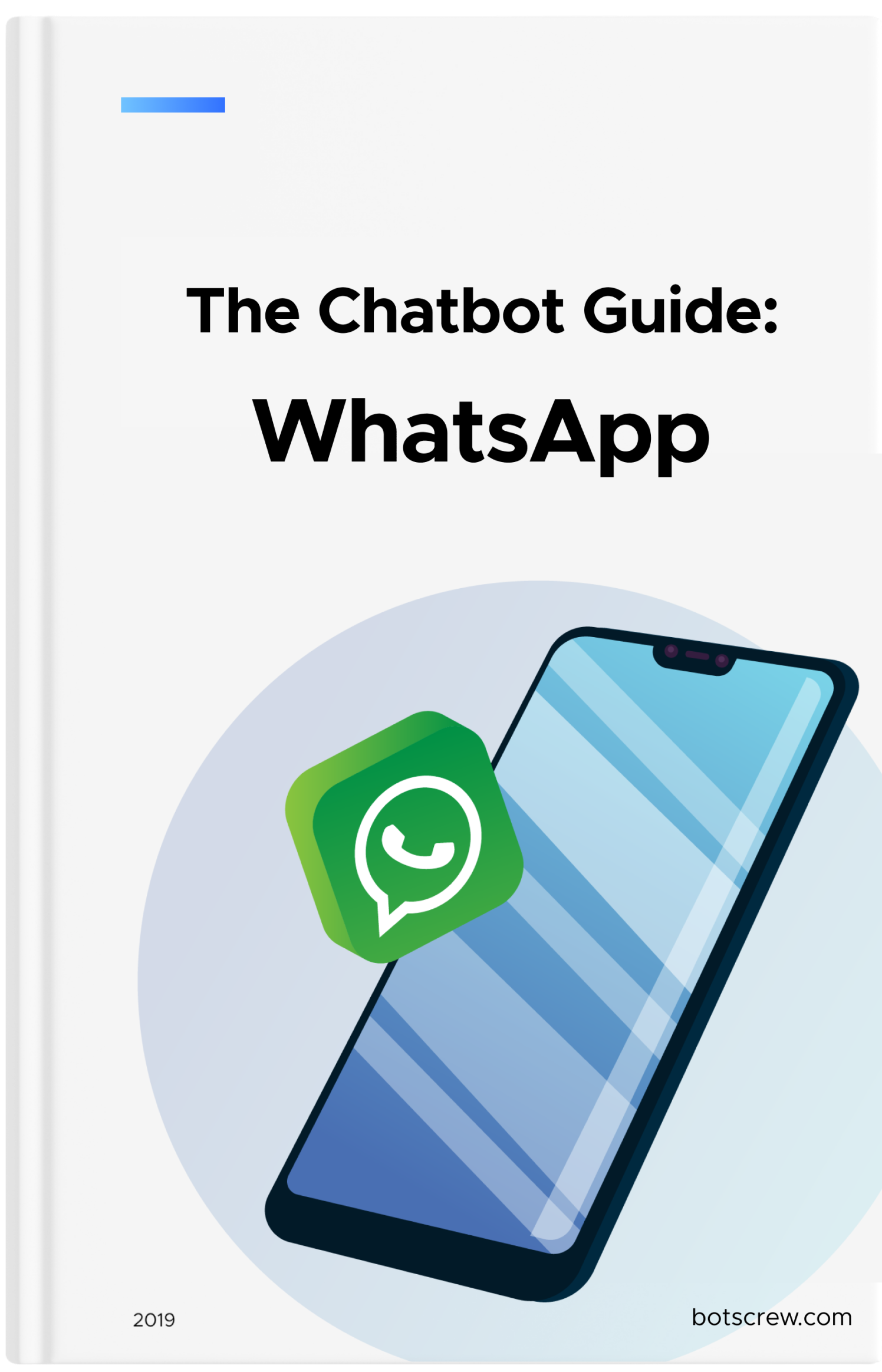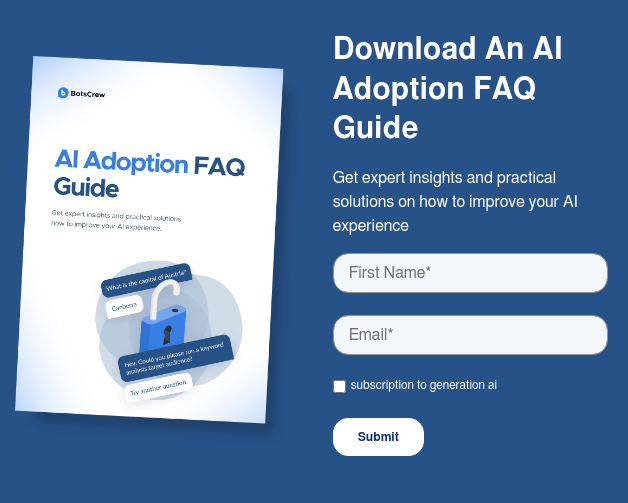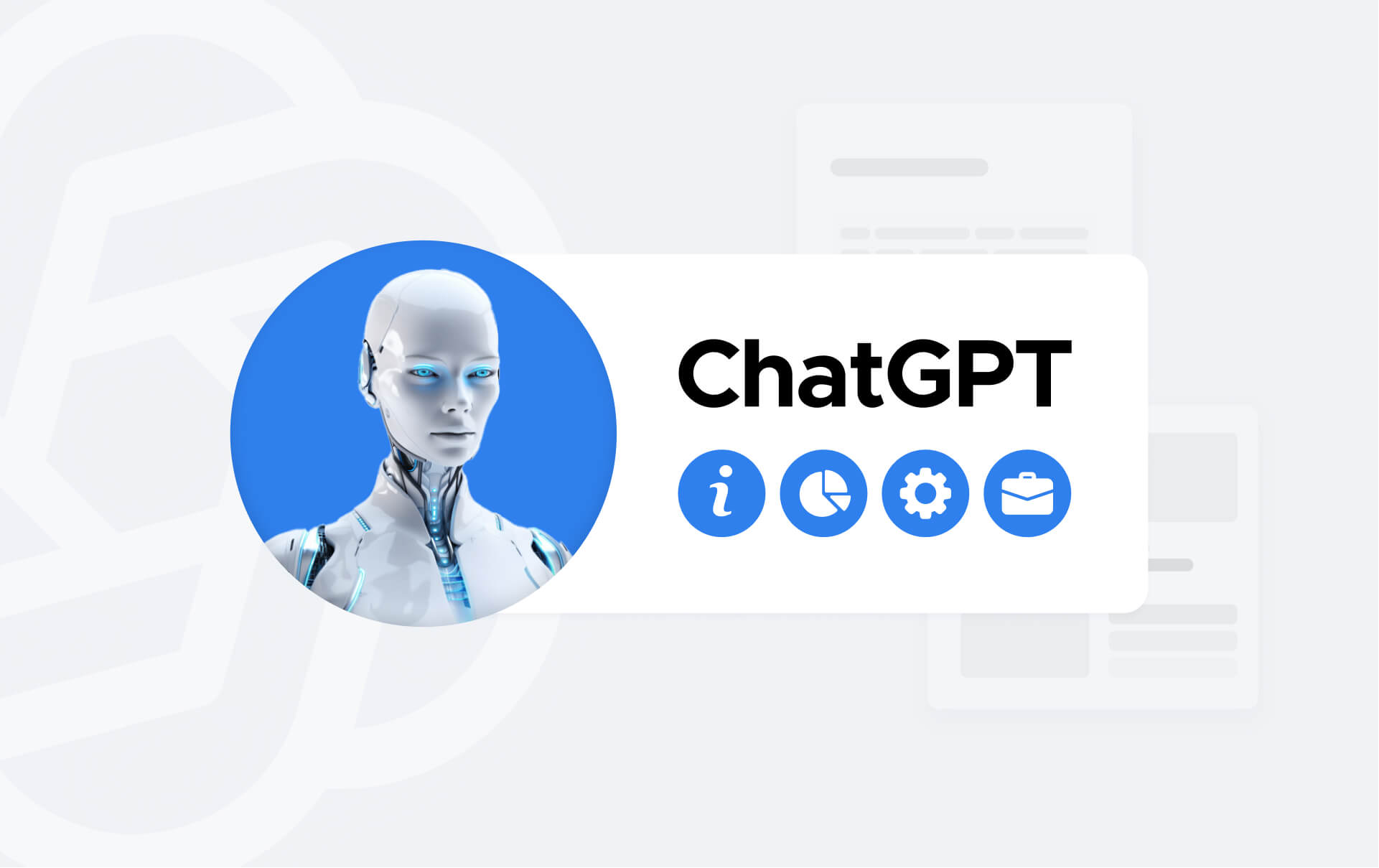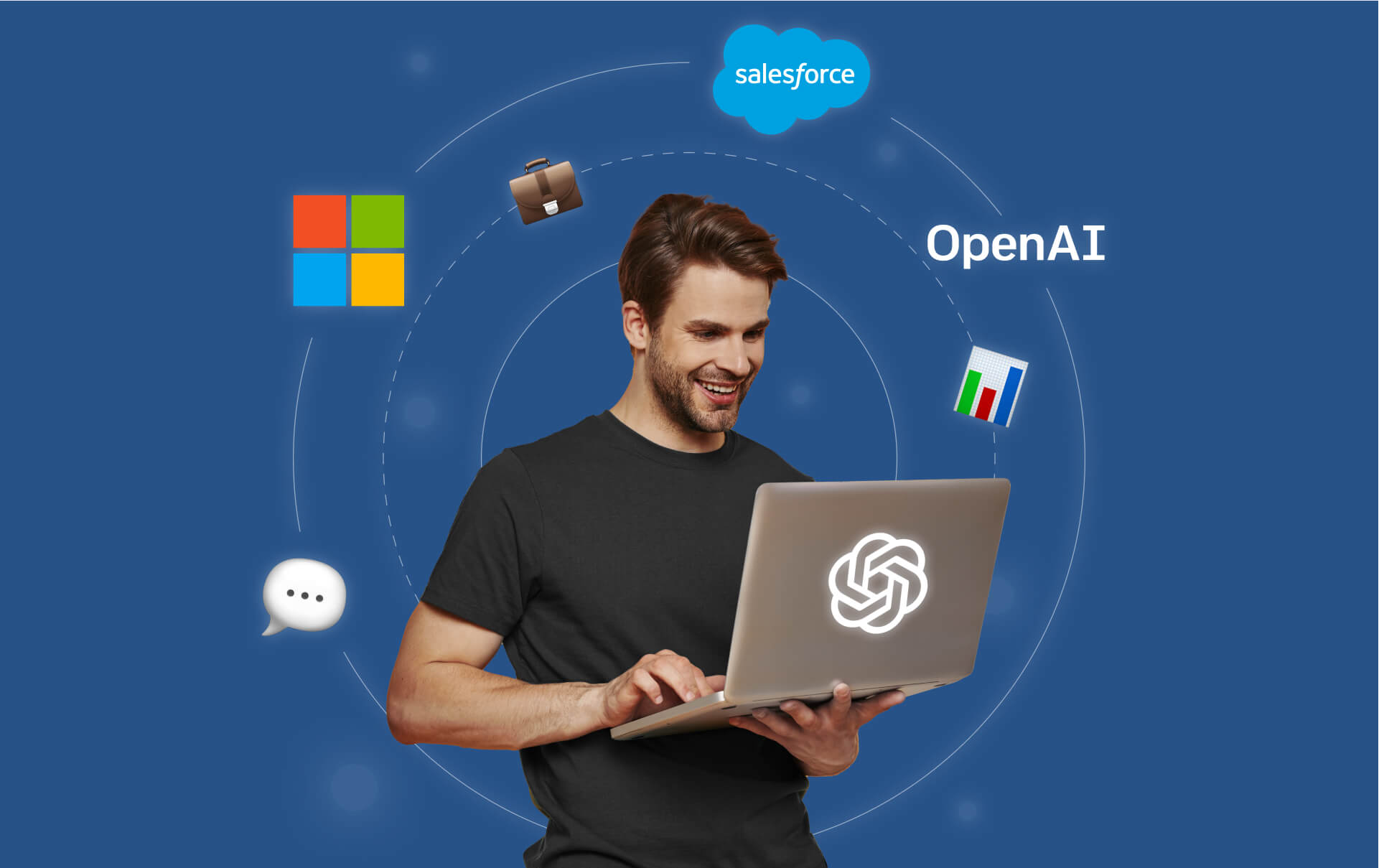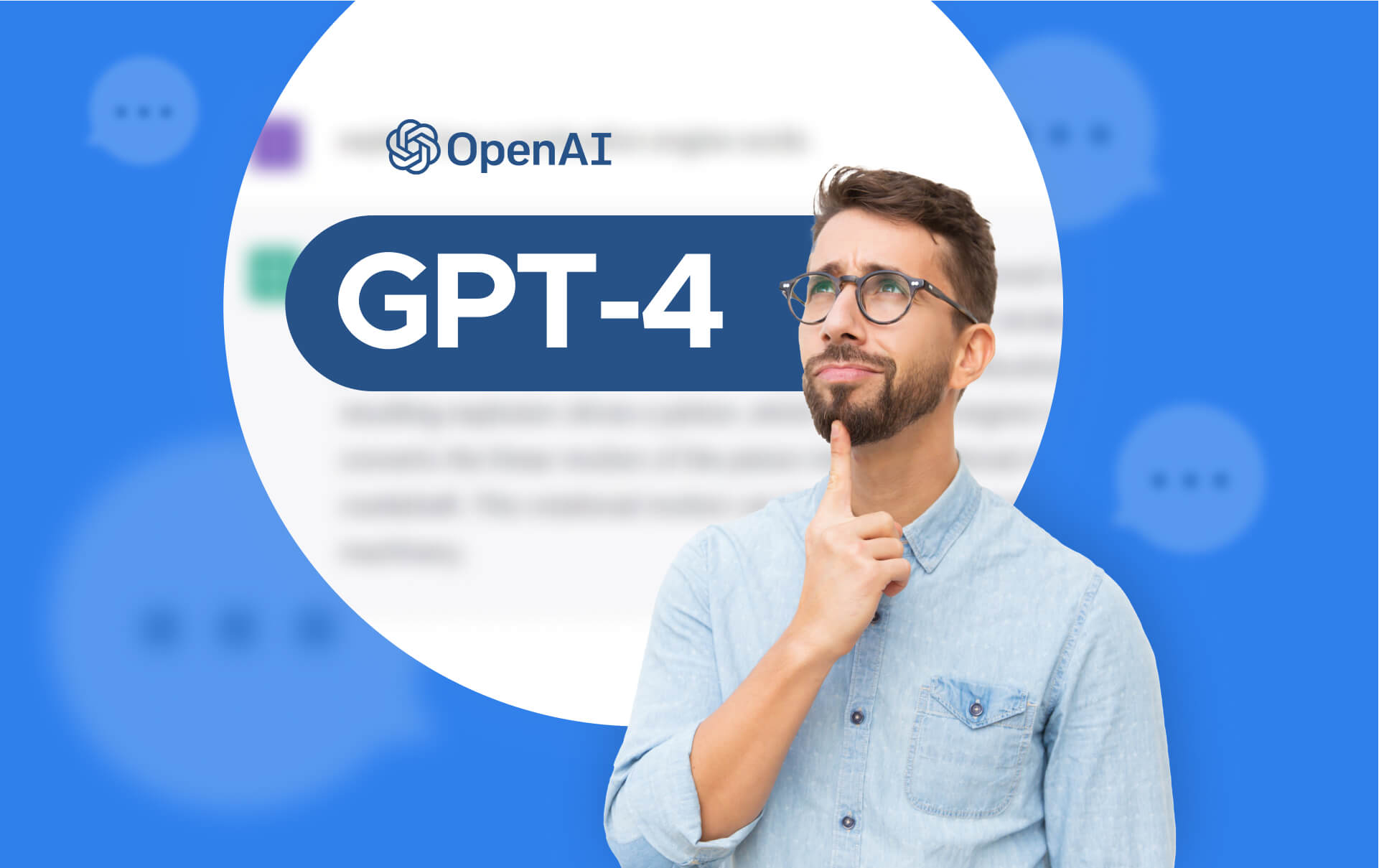Train ChatGPT On Custom Data: A Guide for Non-Techies
Training large language models is typically time and money-consuming. We've highlighted cost-effective ways for non-technical experts to unlock the magic of (Chat)GPT for your business and get what you want out of a GPT-based chatbot.
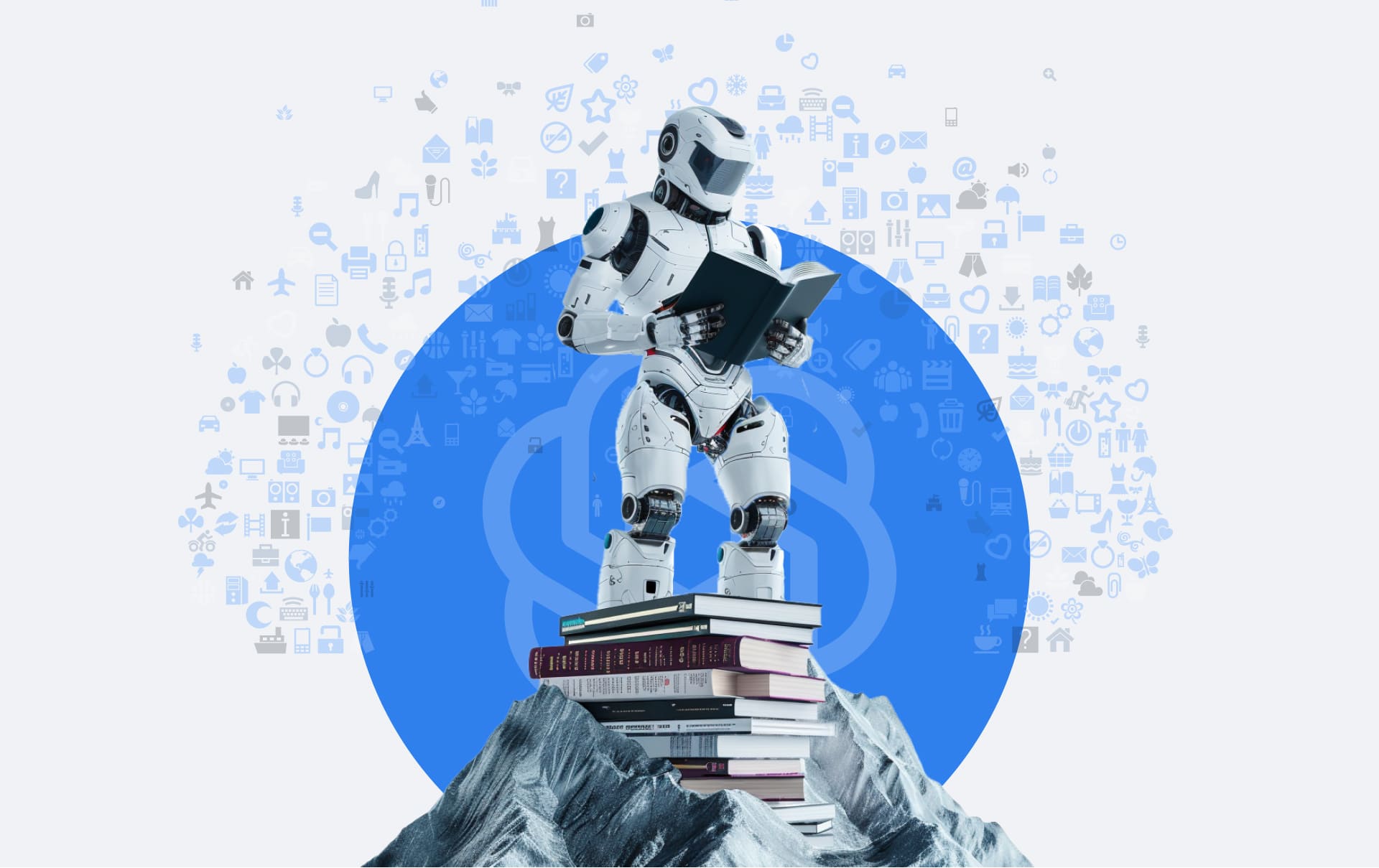
Generative AI models can perform a stunning variety of business tasks. People are using them to write and check software code, draft marketing campaigns or press releases, produce HR policy documents and onboarding materials, and generate engaging emails for customers. However, you can lose at least 50% of the technology's capacity and possibilities if you don't train the Gen AI model on your own data.
We've put together simple ways how to train ChatGPT on custom data. Transform your customer service, sales, and day-to-day tasks using a ChatGPT version explicitly trained on your business data.
Key 4 Reasons Training ChatGPT With Your Data Can Be a Game-Changer
ChatGPT for enterprise or personal usage can undergo additional training with custom data, enabling users to incorporate domain-specific knowledge and context. This flexibility empowers you to align ChatGPT's comprehension with your industry, brand, or areas of interest.
For instance, within healthcare, you can train ChatGPT on a website on medical literature to enhance its accuracy in providing information, while in finance, training it on financial reports and market trends can be invaluable.
The advantages of this customized training are significant:
1. Domain-Specific Knowledge
Unlike generic chatbots that might struggle to grasp the intricacies of your niche, a custom-trained chatbot can deliver highly relevant and precise responses to customer queries, using industry-specific terminology. For example, a chatbot featured on a hospital's website can guide recognizing symptoms of a heart attack. This interaction not only assists patients but also aids doctors in optimizing time management, ultimately facilitating efficient healthcare delivery.
Additionally, mixing various industry data obfuscates the meaning of data attributes. For instance, ‘apple’ may mean fruit in the understanding of a generic bot. But a website bot trained with custom data will know that the user is talking about the brand ‘apple.’
2. Improved Customer Support & Experience
35% of consumers find custom chatbots easy to interact with and efficient in resolving their issues (even complex ones) swiftly. A custom-trained ChatGPT possesses a unique understanding of your business, tailored to manage inquiries, offer assistance, and cater to your customer needs with precision and efficiency.
In addition, by training chatbots with custom data, businesses can tailor responses to individual customers based on their preferences, history, and behavior. This personalized approach fosters a more engaging and relevant interaction, leading to higher customer satisfaction and more profit.
Check out a free trial of what a customer support chatbot could be like. Just ask for a Custom GPT-4 Chatbot Prototype, and we'll whip up a bot for you, free of charge.
3. Relevant Data Insights & Data Analytics
Custom-trained chatbots offer invaluable insights into customer behavior and preferences. By collecting and analyzing data from interactions, they enable you to identify trends, pinpoint pain points, and uncover opportunities. Armed with these insights, you can make informed decisions that drive sales and business growth as well as enhance customer satisfaction.
Experts can also use ChatGPT for data analytics to help formulate hypotheses and design experiments or suggest statistical tests for validation. For instance, a retail company wants to analyze customer purchasing behavior to improve marketing strategies. They use ChatGPT for data analytics trained on their sales data.
Additionally, ChatGPT recommends using a t-test to compare the average purchase frequency and total spending of customers in the personalized discount group versus the control group. It provides guidance on data collection, analysis, and interpretation of results to validate the hypothesis.
4. Enhanced Employee Experience
By integrating vital company details like leave policies, promotion criteria, hiring procedures, remote employee monitoring software, and more into ChatGPT, you transform it into an efficient HR assistant. With this information at its fingertips, the chatbot can offer guidance and promptly provide employees with the information they require, streamlining HR processes and enhancing overall efficiency.
Our portfolio showcases a highly efficient Data Analytics chatbot designed for a prominent retail player. This tool is now utilized by marketers and internal specialists focused on data analytics, enabling comprehensive analysis of all available data.
It empowers employees to extract data on value, volume, categories, regions, brands, and competitors. By navigating through databases, the chatbot promptly responds to queries, generates graphs, and visualizes reports upon request. This facilitates the generation of valuable insights and informed, data-driven decisions without the need for SQL queries or a dedicated data science team.
How to Train ChatGPT on Custom Data For Non-Tech Specialists
Imagine training ChatGPT on custom data without touching a single line of code. Sounds like a dream, right? So, can ChatGPT be trained on custom data then? Well, it's entirely possible with the magic of chatbot builders, Open AI tools, and other methods.
Use Open AI tools
To train ChatGPT effectively, users can upload PDF files directly, although this method may not be as efficient for longer documents and may not achieve 100% accuracy in retrieving all information. When using ChatGPT for business with the GPT-4 model, it is possible to summarize PDFs that are up to 30,000 words in length.
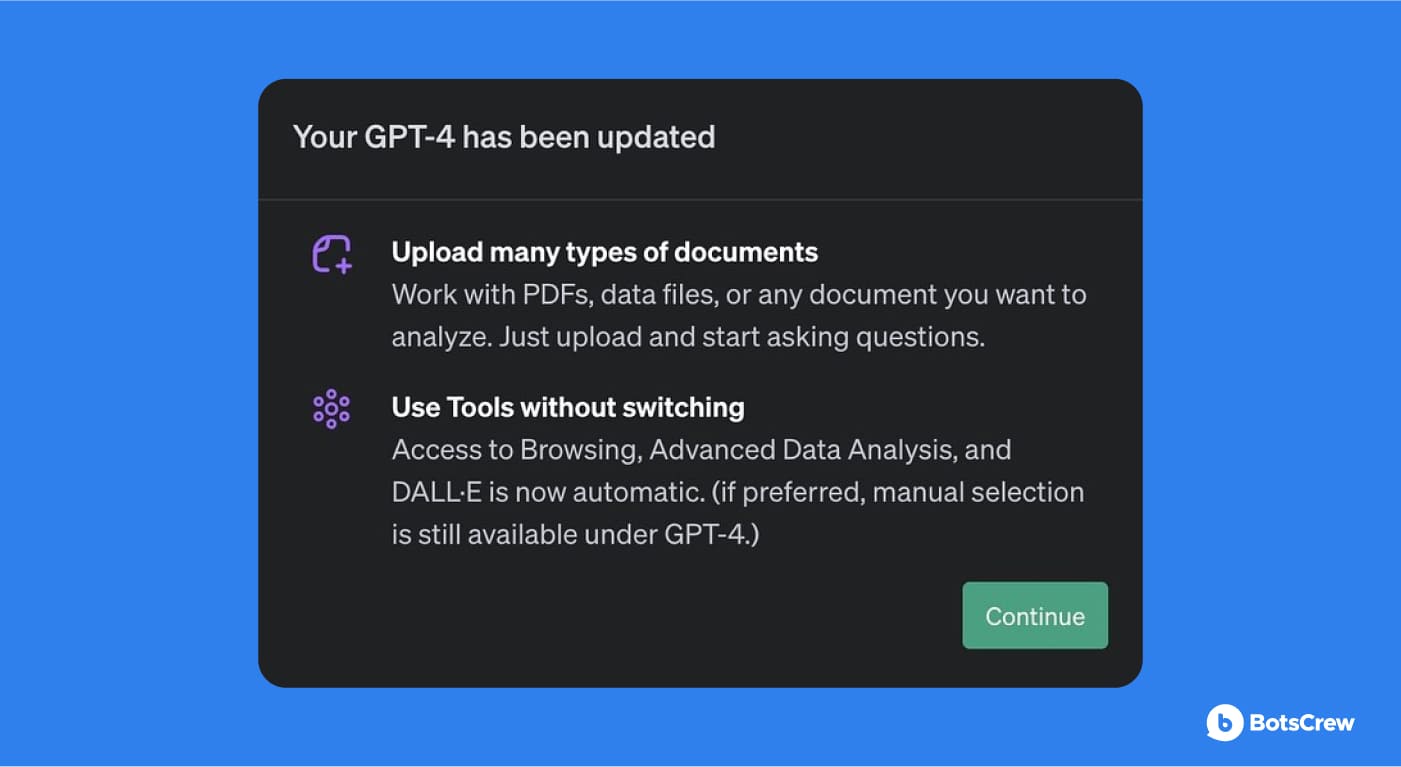
For optimal training with PDF files, it's recommended to divide the document into sections and summarize each section individually. These summaries can then be combined before being presented to ChatGPT for further summarization. Using an API for web scraping can help automate the collection of data from multiple sources, ensuring that your custom chatbot is trained with the most relevant and up-to-date information.
Additionally, users can create multiple knowledge bases containing several documents, enabling the collective retrieval of data. This approach enhances ChatGPT's comprehension and ensures more accurate and comprehensive responses to queries.
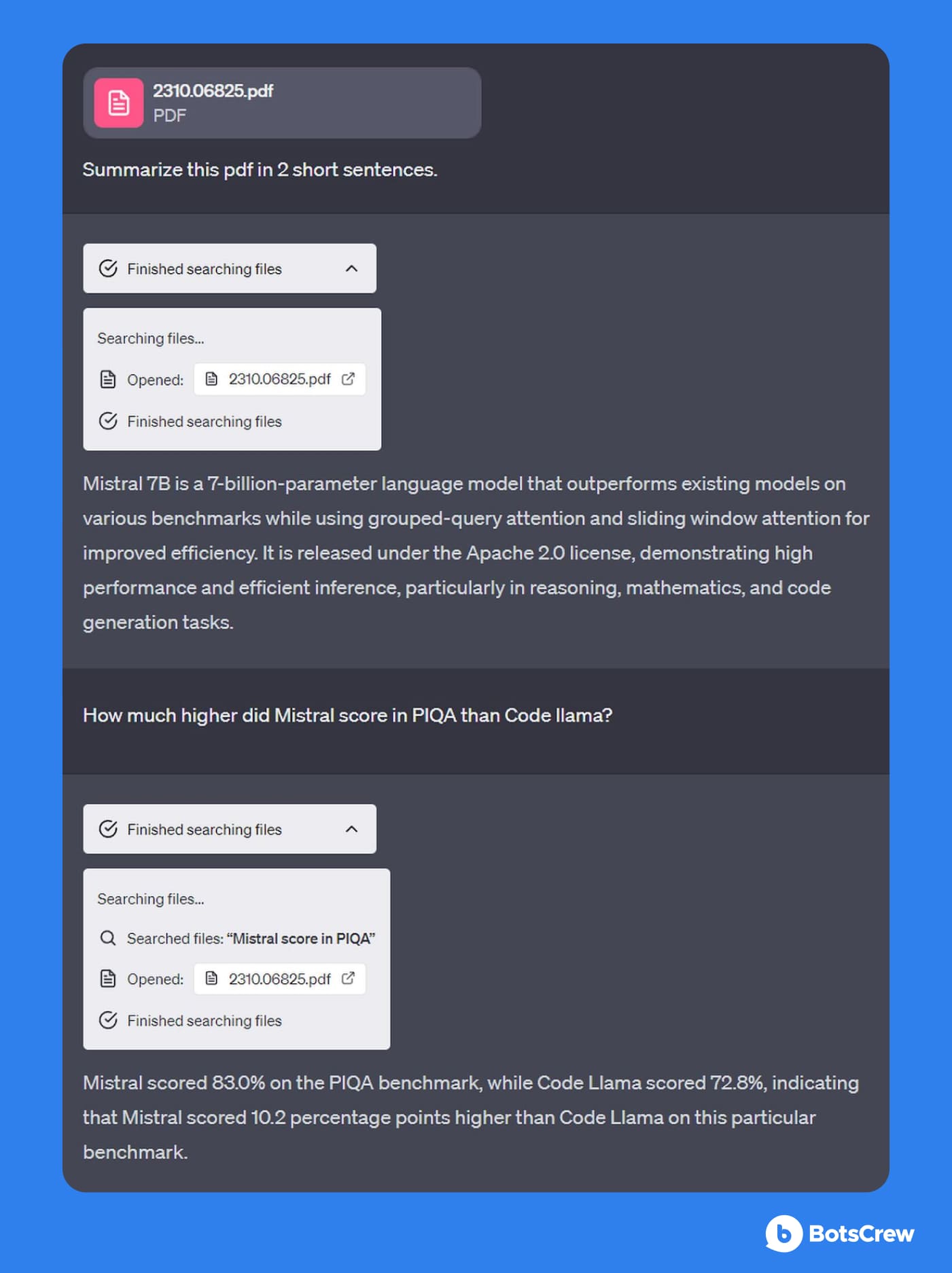
Benefits:
- Affordable for Individual or Small Team Usage. Simply invest $19.99 per person, and you'll be equipped to train the GPT-4o based bot with your own data and unlock advanced tools such as Image Generator and Ask PDF.
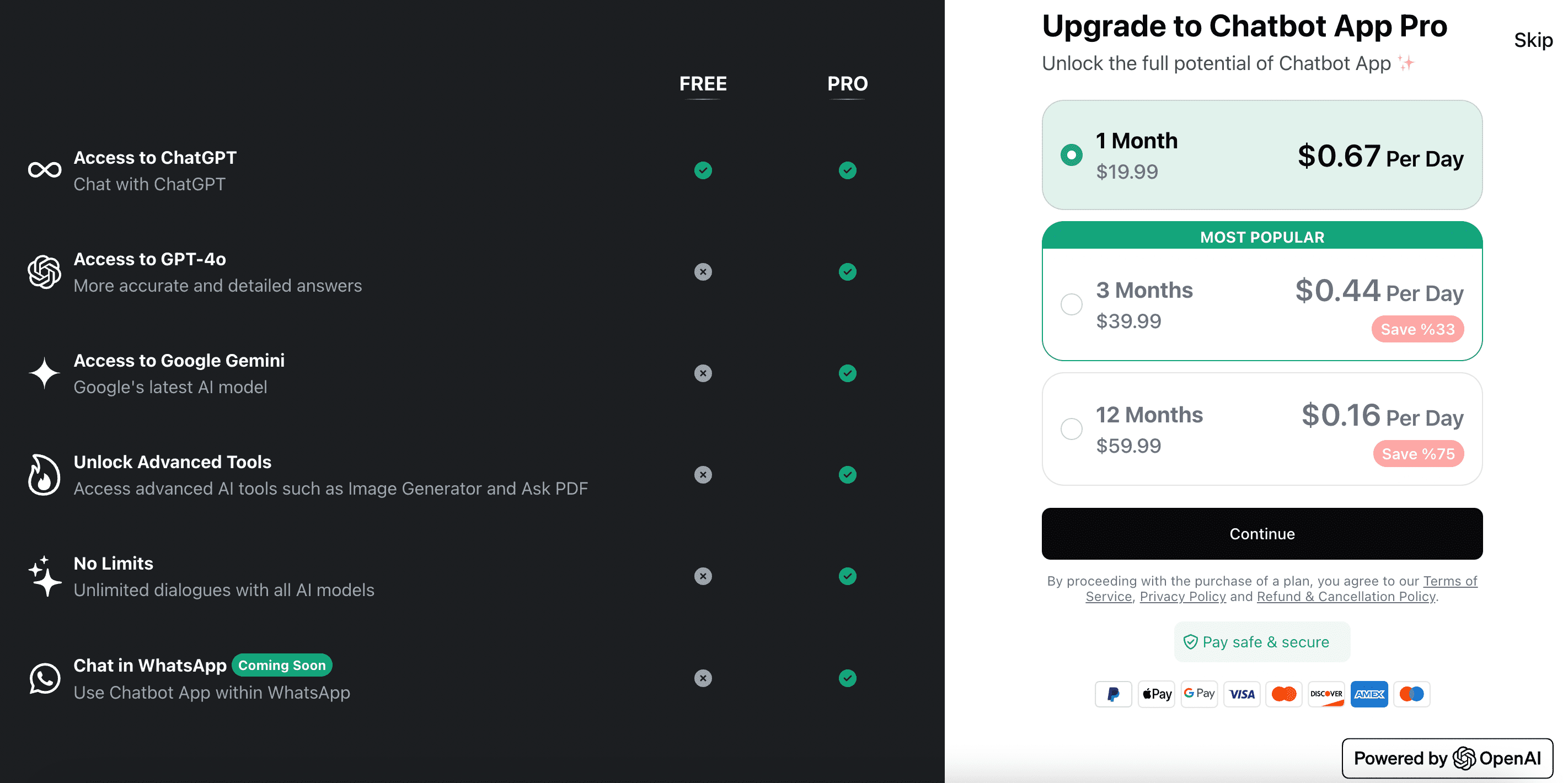
- Continuous Improvement. OpenAI regularly updates and improves its models based on new data and research advancements. This ensures that chatbots developed using OpenAI tools remain up-to-date and capable of delivering high-quality responses.
Limitations:
- Limited Control & Integration Issues. Adding a chatbot to your company's website might not be possible when using an OpenAI. In other words, if you intend to create a customer service bot for your own use, integrating it into the website won't be an option.
- Dependency on External Providers. You're constrained by the functionality offered by OpenAI. If you want or require any enhancements or unique features, obtaining them might not be an option.
- Cost Considerations. While OpenAI offers free access to some of its tools and models, there may be costs associated with using advanced features or scaling up usage. If your company boasts a sizable team, be prepared to pay for each user. Imagine that with 500 employees in your company, expenses can quickly add up.
Was that too complicated? Fret not. We've devised a method for you to swiftly build a customized and personalized ChatGPT chatbot in up to 5 minutes, that too without using a single line of code! So hold onto your hats, and say hello to…
Try SaaS low- or zero-code solutions
Training ChatGPT with your own data is so much easier now! You can now adjust hyper-intelligent, conversational AI experiences for your website visitors in minutes without the need for any coding knowledge.
You can either choose universal options or specialized ones, each with its advantages. Specialized solutions, such as those focusing on lead generation, offer unparalleled support in their respective areas, catering directly to your specific business needs and goals.
For instance, NoForm.ai is the revolutionary no-code AI chatbot builder by BotsCrew that you can use for lead generation purposes by feeding it your website. Itn an engaging conversational form, it smoothly guides visitors through a conversation that not only qualifies their needs but also swiftly nudges them towards becoming a lead or scheduling a meeting.
With No Form, it's sufficient to outline the prompt — the task and goals the company aims to accomplish within a description of up to 20,000 characters. For instance, you can input specific knowledge the chatbot should have in text format or designate it to function as an FAQ bot.
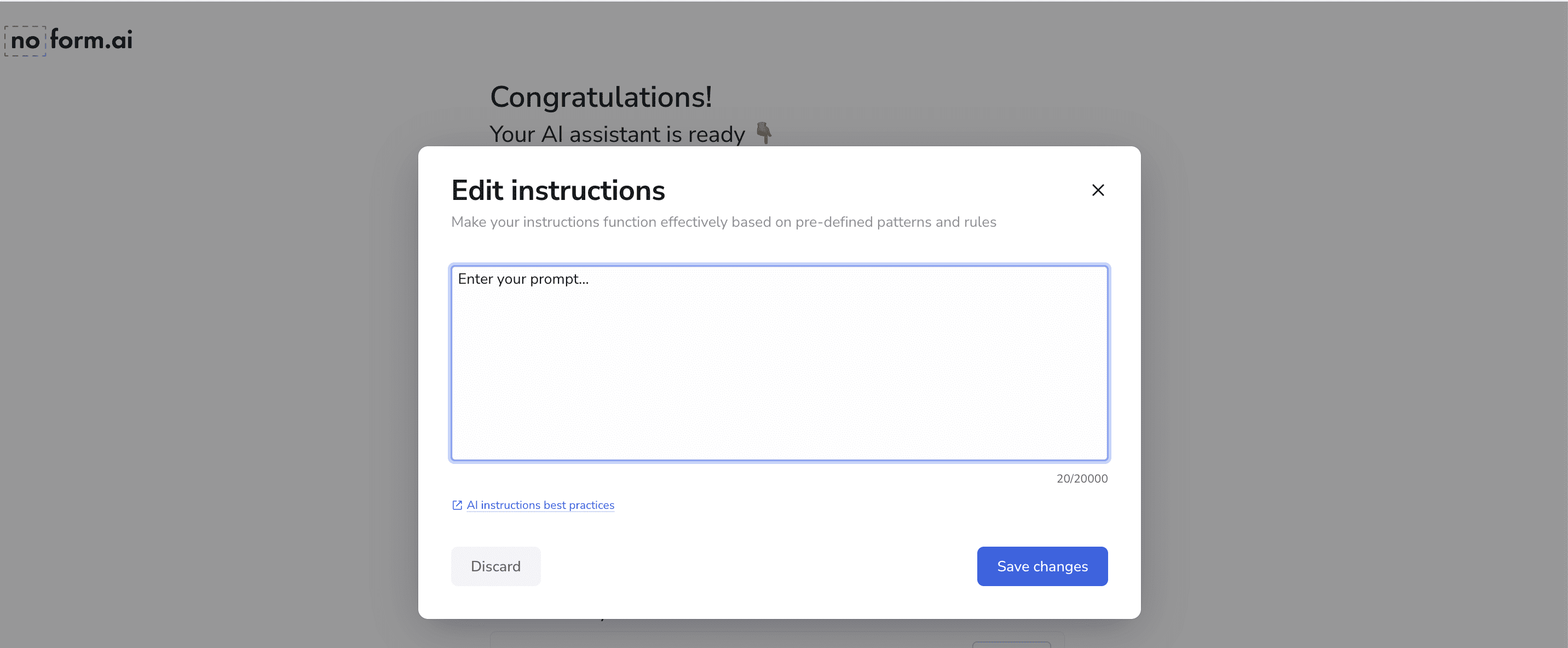
In simple terms, ANYONE can now build an AI chatbot to integrate on their website with just an embeddable code. Discover how to seamlessly add a chatbot to your website and kickstart your journey with it for free by exploring our step-by-step guide.
Benefits:
- Ease of Use and Accessibility. Chatbot builders offer simplicity, enabling businesses of all sizes to leverage advanced AI chatbot solutions without requiring specialized expertise. They empower businesses to train, customize, and deploy chatbots easily.
- Cost-Effectiveness. Chatbot builders often offer cost-effective solutions compared to custom-coded alternatives. They eliminate the need for extensive development and maintenance efforts, making advanced AI technology accessible to businesses with limited resources.
- Fast development. You can set up and install a ready-to-use chatbot on your website in under 5 minutes.
Limitations:
- Constraints and Customization Limits. While user-friendly and powerful, chatbot builders have limitations in terms of customization depth and complexity of responses. Businesses with highly specific needs or requiring advanced integrations may find these constraints limiting.
- Platform Dependencies. Chatbot builders are reliant on the capabilities and updates provided by the platform provider. This dependency may restrict flexibility and hinder the adoption of emerging technologies or features.
Request custom development
Hiring highly skilled AI developers to help you train ChatGPT on your own data can be a smart move — and here is when it makes sense (and why):
- Complex projects. Some projects may require advanced AI expertise or involve complex integrations or large-scale data processing. By hiring professional AI developers, you can be confident that your project is handled with the necessary expertise and attention to detail.
- Long-term support. AI developers can provide ongoing support and maintenance for your AI Virtual Assistant, ensuring that it continues to perform well and adapts to changing requirements.
Building technology from the ground up or training ChatGPT with custom data, though, takes the ‘know-how’ and significant capital. However, with BotsCrew, there is no need to be a well-versed AI expert. Leverage the knowledge of teams that have been building Conversational AI with an intuitive interface for Samsung NEXT, Honda, Mars, FIBA, the International Committee of the Red Cross (ICRC), Adidas, and others for nearly 8 years now.
Get an advanced AI bot with custom features and integrate it with any tools. We offer training capabilities on files, websites, and text excerpts, operating on the retrieval augmented generation principle.
This approach enables training chatbots for diverse purposes, such as handling FAQs or executing actions like forwarding requests or data obtained through chatbot interactions. For instance, a bot can extract a business lead's phone number and seamlessly transmit it to the CRM system for further processing.
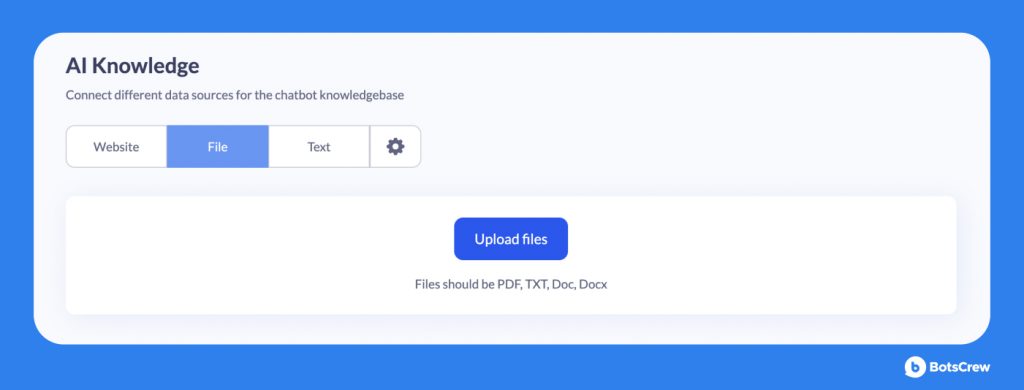
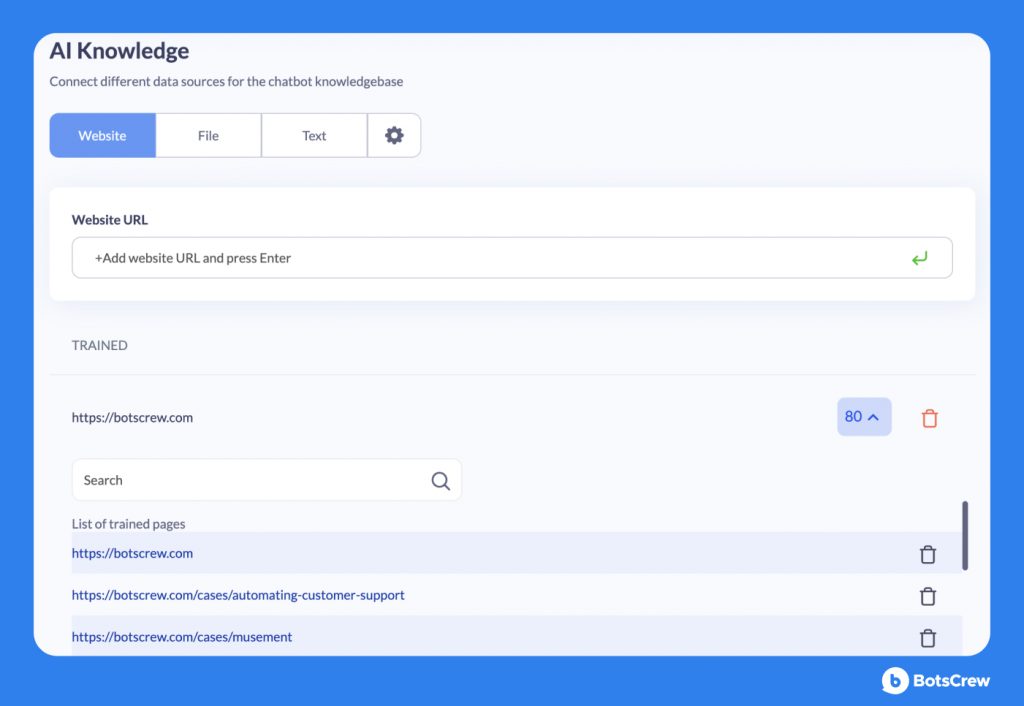
Benefits:
- Tailored Solutions. Custom development provides companies with chatbot solutions that are specifically tailored to unique business needs and requirements. These chatbots can be trained on proprietary business data, enabling them to provide highly personalized and relevant responses to user queries.
- Enhanced Personalization. Custom-developed chatbots can offer a level of personalization that is unmatched by off-the-shelf solutions. They can analyze user preferences, behavior, and past interactions to deliver tailored recommendations and responses, significantly improving the overall user experience.
- Integration with Existing Systems. Custom chatbot solutions can be seamlessly integrated with existing systems and databases within the company. This allows them to access real-time data and provide more accurate and up-to-date information to users.
Limitations:
- Cost and Time Investment. Custom development might incur higher costs compared to using a low/zero-code builder, as it involves more effort and experts. Furthermore, the process might take longer than with a builder, as custom solutions typically entail a bit more complexity than ready-to-use solutions.
- Maintenance and Updates. Custom-developed chatbots require ongoing maintenance and updates to ensure they remain effective and up-to-date. This includes monitoring performance, fixing bugs, as well as incorporating new data and insights into the training model.
Or you can extend your service offerings, unlock a new and predictable revenue stream, and witness your return on investment double within just 6 months with our chatbot reseller program. A dedicated team and prioritized support at all stages — pre-sale, setup, post-sale — comes in a package along with cutting-edge technology.
GPT Business Use Cases Worth Attention
Now, with a premium plan and hundreds of plugins to enhance ChatGPT's capabilities, specialists across various departments are recognizing its potential as a high-functioning assistant that simplifies tasks.
Here's the best business uses for ChatGPT and how using ChatGPT, trained on your business data, can streamline your life, improve corporate processes, and save money. Additionally, explore our website for Generative AI examples.
Corporate (Internal) GPT
Empower your workforce with a custom AI chatbot trained on your company's essential information, including leave policies, promotion criteria, hiring details, and more. This savvy AI chatbot seamlessly assumes the role of an HR executive, guiding your employees and furnishing them with the information they require, enhancing efficiency, and fostering a positive employee experience.
Especially considering the fact about 43% of employees report they are ready to use AI solutions in their work environment. Additionally, 51% of employees credit AI, including GPT-powered tools, for helping them perform tasks more productively and strike a better work-life balance. For instance, CEO Stephane Bancel stated Moderna is currently looking to redesign every business process with AI, allowing the 3,000-person team to perform like 100,000.
Apple has integrated its GPT chatbot into internal operations, leveraging it for various tasks such as prototyping upcoming features, condensing text, and providing answers based on its trained dataset. This tool reportedly enhances the efficiency of Apple employees, aiding them in their work processes.
Additionally, training a GPT-based chatbot on company documents can serve as a powerful corporate assistant. Imagine a scenario where a new employee needs guidance on navigating internal systems and processes. Instead of grappling with extensive documentation or waiting for human support, the employee can engage with an internal chatbot fueled by GPT technology.
Drawing from the organization's comprehensive knowledge base, the chatbot provides immediate assistance, streamlining the onboarding process and fostering productivity. This not only enhances the employee experience but also optimizes operational efficiency within the company.
In 2022, eager to unlock new realms of efficiency and innovation, we at BotsCrew also introduced an internal GPT. Explore our comprehensive case study to uncover the business value, key results, and insightful findings behind our corporate GPT implementation.
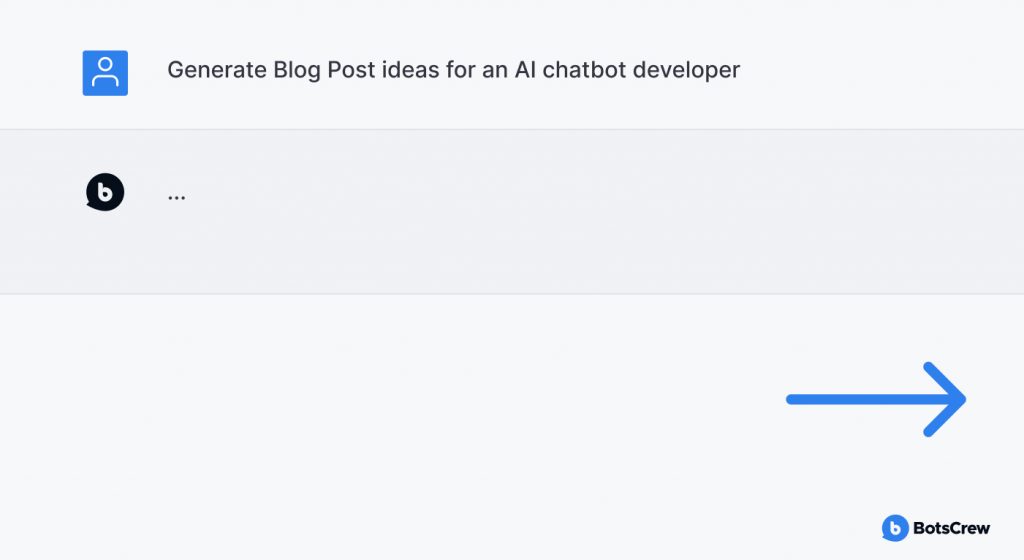
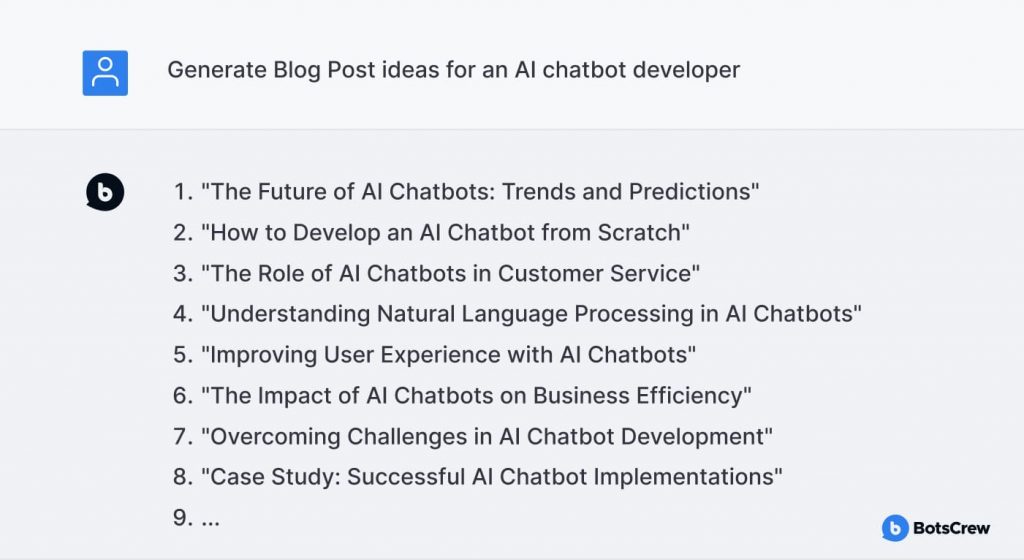
"It has helped me brainstorm a product idea that became a reality."
"Although ChatGPT from OpenAI can perform most of the tasks I need, I still prefer the internal BotsCrew GPT, as it already knows a lot of information about our company, and I don't have to explain who BotsCrew is and what we do with every request. Overall, I am very happy that we have such a tool, which saves me about 10–15% of work time that I can now devote to tasks that require my direct actions. I believe that with the development of this tool, each employee will be able to save up to 1/3 of work time that was previously spent on performing voluminous routine tasks."
Сustomer Service Chatbot
"How do I renew my subscription?" — "I need to change the delivery address." — "Can you reschedule my dentist appointment for tomorrow?" A customer service chatbot is an AI-powered tool meticulously crafted to engage with customers through chat or messaging interfaces, offering automated support and assistance.
Customer service chatbots offer the advantage of providing instant responses to website visitors and addressing inquiries about delivery processes or product details without the need for users to navigate through multiple pages or wait for human support. By handling common inquiries efficiently, customer service chatbots free up human agents to focus on more complex issues, reducing wait times and improving overall customer satisfaction.
Additionally, the GPT-based chatbot excels at grasping the context of conversations, resulting in more personalized responses. Moreover, it can accurately comprehend individual requests, offering enhanced assistance and addressing non-standard queries that conventional bots may overlook due to lack of training.
Let's consider a financial organization that has a chatbot trained on custom data related to its banking products and services. A customer approaches the chatbot with a query about a specific transaction that appears unusual to him. He provides details about the transaction, such as the date, amount, and recipient.
The chatbot, trained on the company's transaction data and customer behavior patterns, accurately comprehends the request and immediately identifies the transaction in question. It provides the customer with detailed information about the transaction, including the merchant name, location, and purpose.
Additionally, the chatbot proactively flags any potential fraud or suspicious activity associated with the transaction, based on its training on fraud detection algorithms and historical data. It guides the customer on the necessary steps to secure their account and prevent any further unauthorized transactions.
Lead Generation Chatbot
According to statistics, a significant number of marketers, specifically 55%, utilize chatbots for lead generation purposes. Among these marketers, many have reported experiencing a notable increase in the number of prospects generated for their respective companies.
Imagine you're operating a real estate company. A prospective customer visits your website, seeking guidance on the finest neighborhoods to invest in property within San Francisco. Rather than leaving them to navigate through an overwhelming sea of content alone, your AI chatbot intervenes, promptly furnishing them with vital details regarding the most suitable areas aligned with their preferences and budgets.
After helping the customer in their research phase, it knows when to make a move and suggests booking a call with you (or your real estate agent) to take the process one step further. Moreover, live assistance facilitated by chatbots can play a crucial role in the lead qualification process.
By engaging users in conversation and seamlessly integrating qualifying questions into the interaction, chatbots can effectively assess user needs and preferences while simultaneously providing value, saving time, and even entertaining users. This approach ensures that the lead qualification process feels seamless and natural, maximizing the likelihood of successful lead conversion.
Сonsiderations When Working With GPT-Based Chatbots
Here are some best practices and considerations for training your ChatGPT chatbot effectively.
👨💻 Ensuring Data Quality
The quality of your training data directly impacts the performance of your chatbot. First of all, consolidating all business-related documents, FAQs, guidelines, and process details into a single file streamlines access to information and ensures a unified data source for efficient retrieval.
Also, implement methods to identify and prevent duplicate records. For instance, in a sales database, utilize unique identifiers such as order IDs to flag any instances of duplication. A validation rule might stipulate: "No two transactions should share the same order ID."
Regularly inspect records for missing data and either route them for further review or exclude them from analysis, marking them as incomplete. For instance, ensure that customer information includes both first and last names; any record lacking one or both of these fields should be flagged. Last but not least, avoid complicated formatting and tables with non-typical layouts.
📝 Adding More Context
To optimize GPT's understanding and performance in processing data, it's essential to provide comprehensive context tailored to the specific domain or expertise. For instance, if the focus is on chatbot development, the prompt should emphasize this specialization to ensure that GPT accurately interprets and responds to queries related to chatbots, rather than generic software development or other unrelated domains.
Furthermore, contextual details such as the industry, target audience, and intended use cases can significantly enhance GPT's ability to generate relevant responses. By specifying that the chatbots are developed for a particular industry, such as healthcare or finance, or specific tasks like customer support or sales assistance, GPT can better understand the nuances and requirements associated with the given context.
🥷 Ensuring Privacy and Safety
When using GPT-based solutions, implement robust data protection measures to safeguard sensitive information processed by the model. Regularly assess and update security protocols to mitigate potential risks and maintain trust with users and stakeholders.
To maintain data privacy and confidentiality, it's crucial to ensure that internal data or prompt history is not utilized by OpenAI for training, as it is in ChatGPT. Furthermore, employing role-based access control (RBAC) mechanisms enables administrators to define and enforce granular permissions based on employees' roles and responsibilities.
This ensures that each user has access only to the resources and features necessary for their job functions, minimizing the risk of unauthorized access or data breaches. Learn how to protect sensitive data and make sure OpenAI does not use your business data for its training.
👥 Compliance with usage policies
Be mindful of any legal and ethical considerations regarding data privacy and user consent when using customer data for training.
By considering these factors, you can leverage all the capabilities of ChatGPT to develop effective and engaging chatbot usage that elevates your business operations and enhances the overall customer/employee experience.
To Wrap Up
By training ChatGPT with your business data, you can ensure that the generated responses adhere to your preferred tone, style, and level of expertise. This versatile approach opens up a wide range of applications, including responding to customer inquiries, offering recommendations, and automating specific tasks. The best part is, that you can train ChatGPT with custom data without any coding required!
For more complex requests and comprehensive solutions, do not hesitate to reach out to us and get BotsCrew on board for future project success. Schedule no strings attached consultation with one of our AI chatbot experts now.




